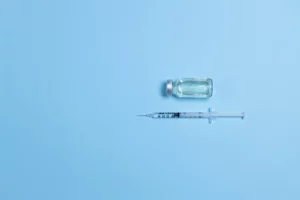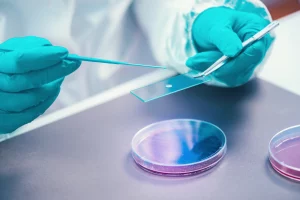Penicillin is an antibiotic derived from Penicillium fungi. Penicillin works by inhibiting the growth of bacteria, preventing them from producing the cell walls they need to survive and multiply. Penicillin is effective against many types of bacteria, including streptococcus and staphylococci, as well as some gram-negative bacteria, such as Escherichia coli (E.coli). But who discovered penicillin? And how was penicillin discovered?
How Was Penicillin Discovered?
Who discovered penicillin? Penicillin was discovered in 1928 by Alexander Fleming, who noticed that a mold had contaminated one of his Petri dishes. Fleming was studying the bacteria Staphylococcus aureus on a petri dish when he saw areas on the plate where bacterial growth had been inhibited. Upon closer inspection, Fleming discovered that it was due to mold’s presence and identified it as Penicillium notatum; he concluded that this fungus had an antibiotic effect.
He purified the compound present in the mold and named it penicillin. Following his discovery, scientists worked to refine penicillin and make it more effective in fighting bacteria. Today, penicillin is still used to treat various infections caused by gram-positive and gram-negative bacteria. It has saved countless lives since its discovery, making it one of the most significant medical discoveries of all time.

How Does Penicillin Work?
Penicillin works by inhibiting the growth of bacteria, preventing them from producing the cell walls they need to survive and multiply. Penicillin binds to proteins in the cell wall called penicillin-binding proteins (PBPs). With these PBPs blocked, bacteria cannot build a strong enough cell wall to protect themselves, and they eventually die off.
The discovery of penicillin has had a profound effect on modern medicine. Penicillin is used to treat various infections caused by gram-positive and gram-negative bacteria, including streptococcus, staphylococcus, E. coli, gonorrhea, chlamydia, and other bacterial infections.
- Streptococcus: Streptococcus is a genus of Gram-positive bacteria, which includes Streptococcus pneumonia, Streptococcus pyogenes, Streptococcus agalactiae, and Streptococcus mutants. Streptococci are anaerobic or facultatively anaerobic, nonmotile, and non-spore-forming cocci in pairs or chains. Streptococcal species are classified based on their hemolytic properties. Alpha-hemolysis occurs when the bacteria cause partial destruction of red blood cells, giving a greenish discoloration around the colonies on blood agar plates; beta-hemolysis occurs with the destruction of red blood cells, leaving clear colonies surrounded by a zone of complete hemolysis.

Streptococci are of primary medical importance in pathogenic and commensal forms, including Streptococcus pneumoniae which is a leading cause of bacterial pneumonia and meningitis worldwide. Streptococcus agalactiae is an important cause of infections in newborns, pregnant women, and immunocompromised adults; it also causes mastitis in lactating women. Streptococcus pyogenes produces many exotoxins that contribute to the pathogenesis of diseases such as strep throat and toxic shock syndrome.
- Staphylococcus is a genus of Gram-positive, round-shaped bacteria known for causing infections in the skin and other parts of the body. It is commonly found on human skin and mucous membranes, as well as on the surfaces of objects in our everyday environment.
These bacteria cause a variety of illnesses, such as food poisoning, sepsis, endocarditis (infection of the heart valves), pneumonia, meningitis (inflammation of the brain and spinal cord), impetigo (a common skin infection), and toxic shock syndrome.
Individuals can reduce the risk of becoming sick from contact with staphylococcus through hygiene practices such as hand washing with soap and water or an alcohol-based hand sanitizer. Food safety steps such as adequately cooking meat and vegetables, handling raw foods, and avoiding contact between cooked and uncooked foods can help prevent staphylococcus infections. If you suspect that you may have a staphylococcus infection, seek medical advice right away. Early diagnosis and treatment are essential to avoid more severe complications.
The discovery of penicillin has saved countless lives and revolutionized how we treat bacterial infections. Penicillin can also be used to prevent infection in cases where the immune system cannot fight off an infection on its own. Additionally, because it is so effective at fighting bacteria, penicillin has been used to help reduce hospital stays and complications from bacterial illnesses like pneumonia or meningitis.
How is Penicillin Administered?
Penicillin can be administered orally, intravenously, or intramuscularly depending on the severity of the infection. Oral penicillin is usually taken in pill form and is ideal for mild to moderate bacterial infections. Intravenous (IV) penicillin is delivered directly into the bloodstream and can be used to treat more severe conditions. Intramuscular injections may also be necessary in some cases. The dose and duration of treatment depend on the type and severity of the infection being treated. It is essential to follow your doctor’s instructions carefully for optimal results.




